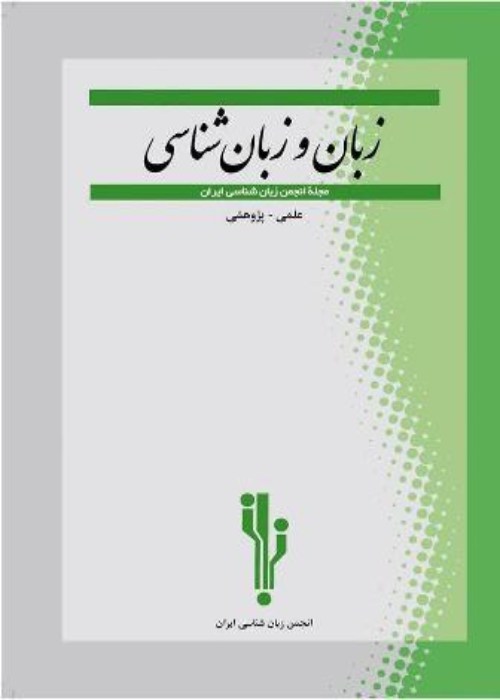Fictive Motion in Persian: A cognitive approach
Author(s):
Abstract:
Motion is a fundamental human experience and mankind، through motion simulation in mind، extends it to the other areas in which there is no movement. This simulation and extension is also reflected in language and language users apply the elements of real motion to describe abstract motion. This paper focuses on a specific type of abstract motion، called fictive motion، from the point of view of cognitive semantics. Fictive motion refers to situations in which the state of a static entity، located in a fixed position، is described by a motion verb. In the present paper، fictive motions in Persian are examined، analyzed and explained. To this end، a corpus of 1750 sentences was established based on the criteria defined for fictive motion components by cognitive researchers. From among them، 42 sentences which are structured in fictive motion were analyzed. The results revealed that the occurrences of the various components of fictive motion construction like Trajector and motion verb follow semantic and stylistic restrictions in Persian. Thus Persian speakers often use Trajectors with a horizontal length and motion verbs that often lexicalize path of motion
Keywords:
Language:
Persian
Published:
Language and Linguistics, Volume:10 Issue: 19, 2015
Pages:
23 to 36
https://www.magiran.com/p1447457
دانلود و مطالعه متن این مقاله با یکی از روشهای زیر امکان پذیر است:
اشتراک شخصی
با ثبت ایمیلتان و پرداخت حق اشتراک سالانه به مبلغ 1,390,000ريال، بلافاصله متن این مقاله را دریافت کنید.اعتبار دانلود 70 مقاله نیز در حساب کاربری شما لحاظ خواهد شد.
پرداخت حق اشتراک به معنای پذیرش "شرایط خدمات" پایگاه مگیران از سوی شماست.
اگر عضو مگیران هستید:
اگر مقاله ای از شما در مگیران نمایه شده، برای استفاده از اعتبار اهدایی سامانه نویسندگان با ایمیل منتشرشده ثبت نام کنید. ثبت نام
اشتراک سازمانی
به کتابخانه دانشگاه یا محل کار خود پیشنهاد کنید تا اشتراک سازمانی این پایگاه را برای دسترسی نامحدود همه کاربران به متن مطالب تهیه نمایند!
توجه!
- حق عضویت دریافتی صرف حمایت از نشریات عضو و نگهداری، تکمیل و توسعه مگیران میشود.
- پرداخت حق اشتراک و دانلود مقالات اجازه بازنشر آن در سایر رسانههای چاپی و دیجیتال را به کاربر نمیدهد.
In order to view content subscription is required
Personal subscription
Subscribe magiran.com for 70 € euros via PayPal and download 70 articles during a year.
Organization subscription
Please contact us to subscribe your university or library for unlimited access!



